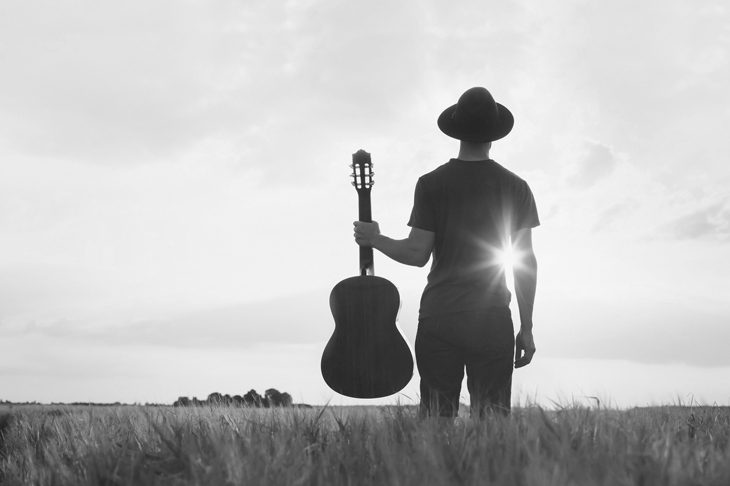After hundreds of densely packed pages on folk song in England — a subject for which I share Steve Roud’s passion — I am none the wiser as to why folk song collectors assumed that a man singing in a pub for free drinks in, say, 1890 or 1920 was de facto a folk singer? A singer of folk songs, yes. A folk singer, maybe not. Such men were ‘professional’ singers of popular songs. They sung what people wished to hear, for recompense: a pint.
If a collector was lucky — and they often weren’t — he might hear on a particular evening the weal and woe and muck and mire of ‘auld ballets’, but they would be buried amid what the 19th-century ballad editor Francis James Child called ‘a veritable dunghill’ of broadside ballads and music-hall pastiches.
The original collectors knew this. According to the godfather of English folk song, the Reverend Sabine Baring-Gould, ‘the songs sung by old topers in public houses were of one sort; those sung by milkmaids were of another’. That quotation does not appear in Roud’s door-stopper of a history, even though it is referenced in a book to which he recently contributed a foreword (Martin Graebe’s As I Walked Out).
These are not facetious concerns. As Roud duly demonstrates, the vast majority of what we know about English folk song is based on the activities of a motley crew of late Victorian and Edwardian collectors, who seem to have done most of their collecting down the pub or by mail — two places where they were unlikely to trip over illiterate knitters in the sun. Here is a gaping hole at the heart of modern folk song scholarship — the world the indefatigable Roud inhabits, having been scampering down that hole for a decade and a half, keen to carry on digging.
Indeed, so keen was he to start the now widely adopted Roud Folk Song Index, he did so before separating primary from secondary sources or drawing up a list of which songs had primacy — which is why the Roud number for the ballad which opens Child’s English & Scottish Ballads, and dates back to at least 1445, is 161, and it is beset on every side by authored pleasure-garden songs from centuries later.
Since then, Roud has shown himself to be no mere statistician. He had grander ambitions, in 2012 convincing Penguin to replace Ralph Vaughan-Williams and A.L. Lloyd’s hugely influential 1959 collection with his own 542-page revision, The New — ‘Improved’ — Penguin Book of English Folk Songs.
And now he has Bert Lloyd in his sights again. Lloyd’s 400-page Folk Song in England (1967), after enjoying a long life in paperback, has had its title and left-of-centre trajectory hijacked by Roud. Not that such an overhaul wasn’t needed. Faber should genuinely be commended for giving the industrious scholar the necessary rope. A modern, hefty study of the subject is certainly long overdue.
Unfortunately, they clearly published what they were given (not the usual practice in the world of publishing), convinced that Roud knew his stuff. And he does; but his stuff seems only to go back to 1765, the date Percy published his Reliques of Ancient English Poetry — 320 years after the aforementioned folk song (known as ‘Lay the Bent to the Bonny Broom’), which survived in oral tradition until 1962, was first noted down.
A stricter editor might have stopped Roud writing multiple books in one. Roud here has three cracks of the whip: one charts the history of collecting; another ‘folk song in the wider musical world’; and finally ‘folk song in its natural habitat’. In fact, he wants to rope in the whole world of song — as evidenced by three unnecessary chapters on 18th-, 19th- and 20th-century popular song.
When he sticks to what he knows (which is a lot) and steers clear of theoretical quagmires for which he is ill-equipped, Roud imparts many insights into the recent history of folk song. But the world he knows inside out is not enough. It seems ironic that someone known best for a Folk Song Index does not know his song histories. But in Folk Song in England he generally shies away from anything that can’t be found in a broadside or drollery, and when he does go elsewhere, he comes a cropper. That’s a shame: there’s a decent book in among these pages.
If Roud had written a shorter book on the decline of English folk song over the last two centuries, he could well have produced the definitive study. But when a man has written at such length on English folk song and still has the chutzpah to pronounce that ‘origins do not matter’, he is perhaps not the right person to tackle the centuries when English folk song was part of a vibrant, largely oral, British tradition. That is the more interesting story, which still needs to be told.






Comments